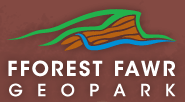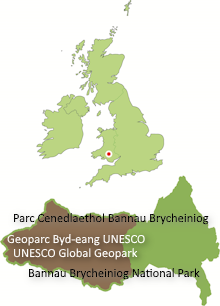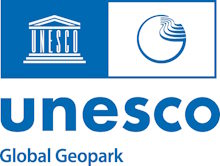(66 to 23 million years ago)
No rocks of this age are known to be preserved within Fforest Fawr Geopark. In common with most of Britain the area lay above sea level during most of this period and is believed to have enjoyed a semi-tropical climate.
Far to the west the modern Atlantic Ocean continued to widen as North America and Europe parted company. To the south the Alps were being raised. Volcanoes were erupting in western Scotland but in Wales, as over much of southern Britain, the rocks were lifted up perhaps as much as 1000 metres so that what remains after subsequent erosion forms the present high hills.
The Antarctic ice-sheet developed during the late Palaeogene period.
The nearest exposures of rocks of this age are to be found on the coast of Cardigan Bay between Tywyn and Porthmadog.
What’s in a name?
The Palaeogene together with the Neogene period which follows it are the new names for what we used to call the Tertiary Period. The name ‘Palaeogene’ (or ‘Paleogene’) derives from the Latin for ‘old formation’ – the earlier part of the former Tertiary period. It is sometimes encountered as the Paleogene, particularly in American writing.
‘Tertiary’ belongs to a time in the history of the science when geological time was divided into four great ‘orders’: the Primary, Secondary, Tertiary and Quaternary. We no longer use the first two terms but ‘Tertiary’ and ‘Quaternary’ are still commonly used.



